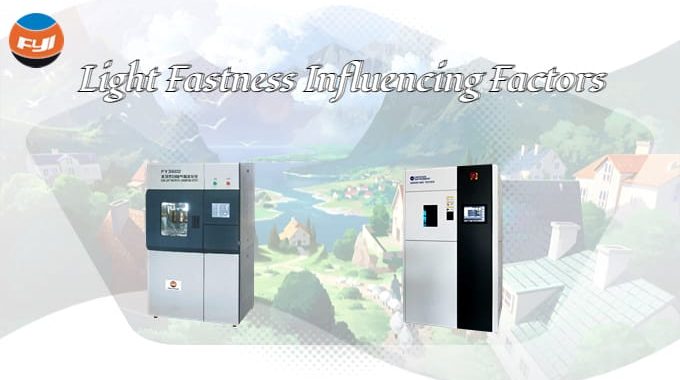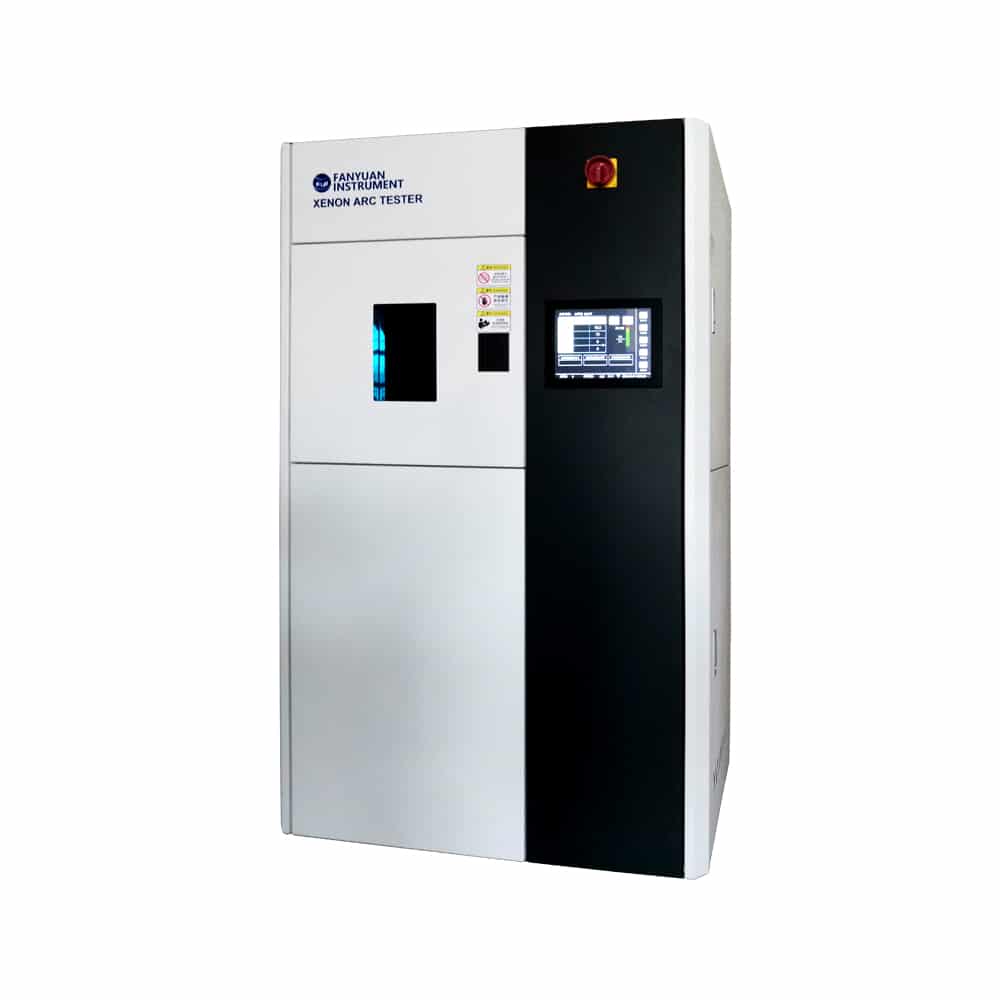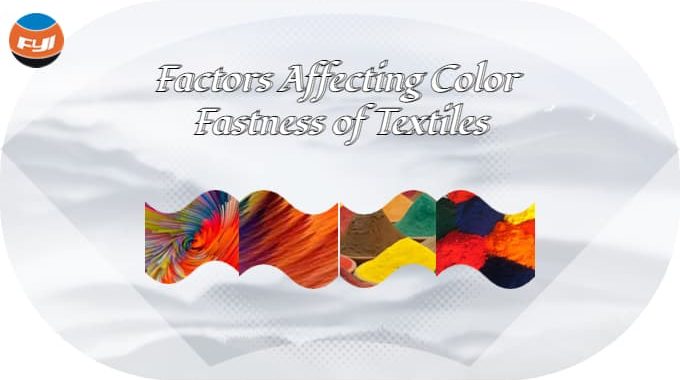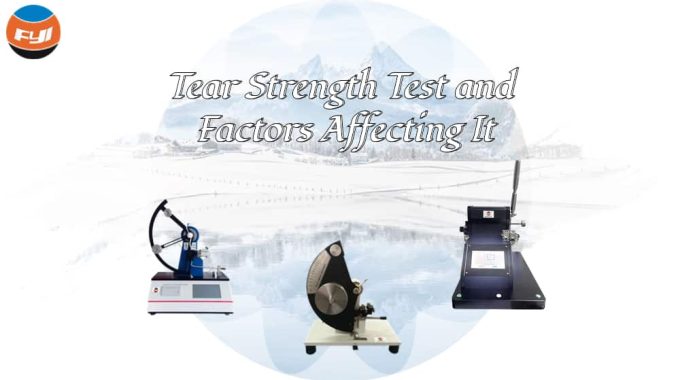
Light Fastness Influencing Factors
Light fastness refers to the degree to which the color of the textile changes color under the action of sunlight or light after it has been dyed or printed.
The factors affecting the actual test process of textile color fastness to light include internal and external factors. The internal cause is mainly caused by the difference in the properties of textile dyes. External factors include many aspects, such as the choice of light source, spectral energy, temperature setting, relative humidity and so on. Since the internal cause of the color fastness of textiles to light is the purpose of the test, it has little to do with the test method. The main factors that have a direct impact on the stability and reproducibility of test results are external factors.
Contents
Internal cause of light fastness
Dye structure
Generally speaking, in the vulcanization of anthraquinone dyes and phthalocyanine dyes, the light fastness of sulfide, sulfide blue and metal complex dyes is better. The light fastness of most insoluble azo dyes is also relatively high. However, the light fastness of the aniline-type azo is low, and triaryl methane is not light-fast.
Fiber type
The light fastness of the same dye on different fibers is also very different. For example, indigo can be fast to light on wool, but its light fastness on cellulose is very low. Another example: the light fastness of Phalamin blue salt B on viscose is much higher than that on cotton.
Dye concentration
The light fastness of the same dye on the same type of fiber varies with the change of the dye concentration. Generally, the fastness of low concentration is poorer than that of high concentration, which is especially obvious on azo dyes.
External cause of light fastness
In the test instrument, the various parameters that affect the results include (ranking the degree of influence) light intensity (light irradiance), temperature in the warehouse, humidity in the warehouse, wind speed, etc.
The light fastness tester is used for light fastness experiments of various textiles, leather, plastics and other materials. By setting the irradiance, temperature and humidity in the test chamber, the natural conditions required for the experiment are simulated to test the quality of the sample. Color and performance changes, but also test the light aging resistance of materials. A mature light fastness tester should be able to set the above parameters within a certain range and be stable within the allowable error of the set value, so as to ensure the reproducibility and comparability of the test results.
Light intensity
The long-arc xenon lamp is an artificial light source with good simulation effect on the sunlight spectrum. It has many advantages such as high power (greatly shortening the test cycle), strong anti-interference, long life, and low cost. In actual use, the long-arc xenon lamp also generates heat while emitting light. The purpose of the experimenter is to use its light energy and remove its heat energy (according to the cooling method, it is divided into air-cooled type, such as West German Heraeus 150, 150S, 150S+, American Q-SUN, Italian Meccaso, and Helios, etc. Brand, water-cooled; such as: ATLAS, Ci3000+, Ci4500+, Ci6000+, etc.). As far as the cooling effect is concerned, of course, the water-cooled type is better. However, the air-cooled type has a great advantage of low cost due to its low cost, so the air-cooled type is the main one in the market.
With the prolongation of the use time of the xenon lamp, under the same power consumption, its luminous efficiency is constantly decreasing, while its heating efficiency is constantly increasing. For this reason, it is necessary to carry out feedback control on the light irradiance to make it stable within the range allowed by the standard. In the energy spectral distribution of the xenon lamp, the ultraviolet region should be the most harmful to the color, so the light metering sensor is usually divided into two types: wide-range sensor (300~400mm) and narrow-range sensor (420mm) half-bandwidth (of course there are other band-specific sensors). As far as the placement position of the sensor is concerned, its function is to monitor the change of the light intensity of the lamp tube in real time for feedback control.
Chamber temperature
The air temperature of the light fastness system box directly affects the surface temperature of the sample, the temperature of the blackboard and the air humidity in the box, which will later affect the test results of the sample.
For the air-cooled xenon lamp, when it emits light, the heat emitted enters the test chamber through radiation and conduction, causing the temperature in the chamber to rise. Especially when the lamp tube enters the later stage of its service life, its calorific value increases and its luminous efficiency decreases. In order to ensure the stability of the light intensity, the power of the lamp had to be increased, causing the lamp to generate more heat. If you do not take appropriate measures, it will inevitably cause the temperature in the warehouse to rise. It is necessary to use Freon refrigeration technology to cool the air in the warehouse. The principle is similar to the temperature and humidity control principle of the constant temperature and humidity laboratory, so as to ensure the effective control of temperature.
Black panel temperature
In the light fastness test of textiles, the surface temperature of the sample is usually obtained by measuring the temperature of a standard metal plate. According to different construction principles, it can be divided into black panel thermometer (BPT) and standard black standard thermometer (BST). It is a comprehensive reflection of the light and heat energy received by the sample.
BPT
The temperature indicated by the black panel thermometer (BPT) is the sum of the transfer temperature of the heated air received by the black panel and the temperature rise of the irradiated light source. Because the black panel thermometer (BPT) uses a metal plate similar to a black body as a temperature sensor and is placed side by side with the sample on the sample rack, and the black body has a strong heat absorption capacity, so the temperature indicated by the black panel thermometer (BPT) generally represents The highest temperature a sample may reach.
BST
Black standard thermometer (BST) is a kind of black plate thermometer (BPT) and the sample holder are made of metal sheets, heat dissipation is fast, and it is inconvenient to reflect the temperature rise of dark samples with poor thermal conductivity, so it is developed subsequently. Black panel thermometer with insulated base. The black standard thermometer (BST) is more suitable for displaying the temperature of the exposed surface of the dark sample with poor thermal conductivity, and the temperature displayed by the black standard thermometer (BST) will be higher than that displayed by the black panel thermometer (BPT), so it is more suitable for Monitor the allowable test temperature.
As the xenon lamp ages, its luminous efficiency decreases. In order to achieve the same level of fading, more test time must be extended; the proportion of heat generation will increase; coupled with the aging of the filter, the ability to filter infrared rays will decrease, resulting in high BST and BPT.
Therefore, to control the temperature of the blackboard, we must start with the ambient temperature in the warehouse, the xenon lamp, the filter, the wind speed, etc., in order to better control the temperature of the blackboard and meet the requirements of different standards for the instrument. At the same time, it is also an important basis for judging whether the xenon lamp and the filter are invalid.
Light Fastness System Relative Humidity
The aging factors of textiles mainly include light radiation, temperature and relative humidity. When the humidity increases, the water solubility of most dyes is enhanced, and the decomposition speed will also be accelerated. In the current standard, the effective humidity is defined by combining the air temperature, the surface temperature of the sample and the relative humidity of the air which determines the moisture content of the surface of the sample during the exposure process. The humidity control standard is made of cotton fabric dyed with red azo dye, referred to as humidity control red cloth. Humidity control red cloth with the increase of effective humidity, the ability of color fastness to light decreases significantly.





Wow, great blog article. Want more
This is very interesting, You are a very skilled blogger. I’ve joined your feed and look forward to seeking more of your excellent post. Also, I have shared your site in my social networks!
This is a very beautiful and intriguing essay. It’s always interesting to learn about the folks that create all of these beneficial items for us.
I appreciate you sharing this blog post. Cool
Very excellent post with useful information; I’d want to return to this page.